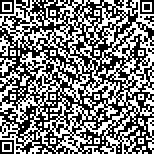何颖,李玉琢,陈静,等.神经电生理监测在面肌痉挛患者术前评估及其预后判断中的应用[J].中华物理医学与康复杂志,2023,45(6):506-510
扫码阅读全文

|
| 神经电生理监测在面肌痉挛患者术前评估及其预后判断中的应用 |
|
| |
| DOI:10.3760/cma.j.issn.0254-1424.2023.06.005 |
| 中文关键词: 偏侧面肌痉挛 神经电生理 预后 |
| 英文关键词: Hemifacial spasm Neurophysiology Prognosis |
| 基金项目: |
|
| 摘要点击次数: 4441 |
| 全文下载次数: 4488 |
| 中文摘要: |
| 目的 分析偏侧面肌痉挛患者术前肌电图与痉挛评估的诊断价值及术中电生理监测与预后的关系,为临床诊治提供帮助。 方法 选取31例偏侧面肌痉挛患者进行临床痉挛程度评分,按临床痉挛程度评分分为一般痉挛组(27例)和严重痉挛组(4例),对所有患者进行术前神经电生理检查,记录颤搐放电、面神经传导速度(MCV)、瞬目反射、侧方扩散(LSR)、脑干听觉诱发电位(BAEP)、瞬目反射;术中进行电生理监测,记录术中LSR情况。根据术中LSR消失与否,将患者分为LSR消失组和LSR残留组,分别于术后1周、术后3个月和术后半年,观察和比较这2组患者的面肌痉挛术后临床疗效评估情况。 结果 一般痉挛组和严重痉挛组患者的术前肌电图检查,LSR均为阳性表现,面神经MCV均在正常范围,而针极肌电图观察到的颤搐放电和瞬目反射、术前BAEP的组间差异有统计学意义(P<0.05)。根据术后31例患者的LSR是否消失,患者分为LSR残留组(15例)和LSR消失组(16例)两组,比较各组术后1周(痊愈患者残留组1例,消失组3例;明显缓解患者残留组3例,消失组7例)、术后3个月(痊愈患者残留组5例,消失组7例;明显缓解患者残留组3例,消失组6例)及术后半年时(痊愈患者残留组5例,消失组12例;明显缓解患者残留组9例,消失组2例)患者的面肌痉挛恢复情况,LSR消失组和LSR残留组组内上述3个时间点的临床疗效评估比较,痉挛恢复差异均有统计学意义(P<0.05),且术后半年时间点优于术后3个月且优于术后1周时间点(P<0.05);术后同一时间点的痉挛恢复比较,术后1周时间点组间差异有统计学意义(P<0.05),且为消失组显著优于残留组(P<0.05),而术后3个月和术后半年时间点的组间差异均无统计学意义(P>0.05)。 结论 术前肌电图能对面肌痉挛范围及程度、面神经兴奋性提供客观诊断评估依据;术中电生理实时监测,能帮助术者客观评估减压效果,及时发现避免周围神经牵拉损伤情况。 |
| 英文摘要: |
| Objective To analyze the diagnostic value of preoperative electromyography and spasticity assessment for patients with hemifacial spasm, and to define a relationship between intraoperative electrophysiological examination and prognosis in order to provide help for clinical diagnosis and treatment. Methods Thirty-one patients with hemifacial spasm were selected for the clinical spasticity scoring and divided into a general spasm group (n=27) and a severe spasm group (n=4). All received preoperative neurophysiological examination to record their twitch discharge, facial nerve conduction velocity (MCV), lateral spread (LSR) of the spasm, brainstem auditory evoked potential (BAEP), and blink reflex. Electrophysiological monitoring then recorded intraoperative LSR. According to whether the LSR disappeared or not, the patients were divided into the LSR disappearance group (of 15) and the LSR residual group (of 16), and facial muscle activity was recorded again one, three and six months after the operation. Results Preoperative EMG examination of both groups showed positive LSR and that facial nerve MCV was within the normal range. There were, though, significant differences between the two groups in the twitching discharge by needle electromyography, blink reflex and preoperative BAEP. One week after the operation, one member of the residual group and 3 from the disappearance patients of the former and latter group had recovered in terms of LSR, with 3 and 7 cases significantly relieved, respectively. Two months later, the corresponding figures were 5 and 7, 3 and 6, respectively. Half of a year after the surgery, 5 from the residual group and 12 from the disappearance group had fully recovered in terms of LSR, while 9 and 2 cases were significantly relieved. Altogether, there were significant differences within the two groups in terms of recovery among all the time points, with significantly better recovery in the LSR disappearance group than the LSR residual group at 1 week after operation, while there were no significant differences between the two groups in recovery 3 and 6 months after their operation. Conclusions Preoperative electromyography can provide objective assessments of the scope, severity, and facial nerve excitability of patients with hemifacial spasm. Real-time intraoperative electrophysiology monitoring can help surgeons to objectively assess the effect of decompression and to find and avoid nerve traction injury in surrounding areas quickly. |
|
查看全文
查看/发表评论 下载PDF阅读器 |
| 关闭 |
|
|
|